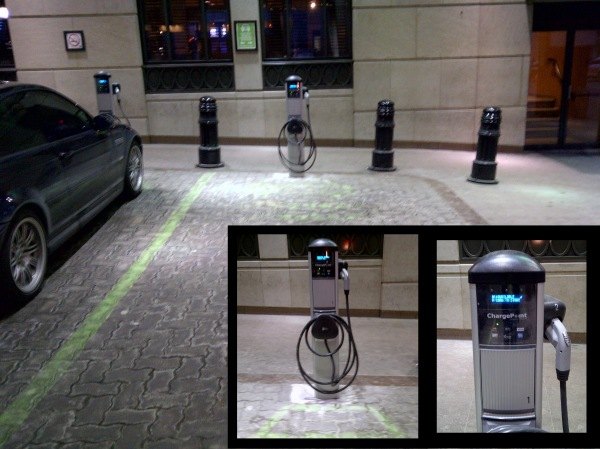6 Views
Are Urban Planners Keeping EVs – And The Automobile – Out Of The Cities Of Our Future?
by
Derek Kreindler
(IC: employee)
Published: May 25th, 2012
Share
Over dinner with our beloved Editor-At-Large two weeks ago, Ed and I discussed what we felt was the coming “post-car” era; rampant consolidation, the death of beloved brands and the subsequent widespread love for classic cars, the adoption of other forms of mobility and a fierce anti-car backlash. A nugget of information buried at the end of a Ward’s Auto report instantly brought all my fears and apprehension to the forefront, a mere fortnight after Ed and I concluded that things weren’t going to be that bad after all.
Derek Kreindler
More by Derek Kreindler
Published May 25th, 2012 3:31 PM
Latest Car Reviews
Read moreLatest Product Reviews
Read moreRecent Comments
- Bkojote @Lou_BC I don't know how broad of a difference in capability there is between 2 door and 4 door broncos or even Wranglers as I can't speak to that from experience. Generally the consensus is while a Tacoma/4Runner is ~10% less capable on 'difficult' trails they're significantly more pleasant to drive on the way to the trails and actually pleasant the other 90% of the time. I'm guessing the Trailhunter narrows that gap even more and is probably almost as capable as a 4 Door Bronco Sasquatch but significantly more pleasant/fuel efficient on the road. To wit, just about everyone in our group with a 4Runner bought a second set of wheels/tires for when it sees road duty. Everyone in our group with a Bronco bought a second vehicle...
- Aja8888 No.
- 2manyvettes Since all of my cars have V8 gas engines (with one exception, a V6) guess what my opinion is about a cheap EV. And there is even a Tesla supercharger all of a mile from my house.
- Cla65691460 April 24 (Reuters) - A made-in-China electric vehicle will hit U.S. dealers this summer offering power and efficiency similar to the Tesla Model Y, the world's best-selling EV, but for about $8,000 less.
- RHD The analyses above are on the nose.It's a hell of a good car, but the mileage is reaching the point where things that should have worn out a long time ago, and didn't, will, such as the alternator, starter, exhaust system, PS pump, and so on. The interiors tend to be the first thing to show wear, other than the tires, of course. The price is too high for a car that probably has less than a hundred thousand miles left in it without major repairs. A complete inspection is warranted, of course, and then a lower offer based on what it needs. Ten grand for any 18-year-old car is a pretty good chunk of change. It would be a very enjoyable, ride, though.


































Comments
Join the conversation
"Why would you hope for government intervention?" Herb, did you actually read what I wrote? I was not advocating for or against government intervention BUT I WAS reminding people that we have already had a tremendous/colossal/stupendous amount of government intervention. And most of it has been good! WE are the government. After WW II the people of California, through their government bet big on cars and trucks and built a fantastic amount of freeways. This bet paid off big - the State of California became the 6th largest economy in the world! When Reagan ran for president he somehow forgot this and said, "government is the problem". HE WAS WRONG. We ARE the government. Have we chosen bad leaders sometimes? Of course. But in general we have done a good job. What is the alternative? Are you willing to wait for me to build my section of road, willing to wait for me to weld in my section of pipe line or install my section of electric high voltage line, wait for me to build my section of the next fighter plane, willing to wait for me to inspect your meat and vegetables, willing to wait for me to put out the fire in your garage where you store gasoline for your lawnmower, or even willing to wait for me to come to your aid if your neighbor decides to raise cobras in his back yard? A few seem to think government is always wrong and always in the way. Nonsense. We are the government and we have to join together to do all the above. (My specialty is spreadsheets, so I can help the fire department keep track of their expenses when they save your garage. I don't think you would want me to weld my share of our next pipeline or round up cobras.) Back to ICEs. The ICE has been good to our standard of living for 150 years but maybe it has run its course and it is the duty of us (the government) to leave options open and to PLACE BETS on what will work in the future. Some bets will pay off.
As already has been stated above, an important goal should be to have everything in walking (or walkable) distance, and, if that is not possible in a distance that is supported by public transport), whether the destination is an office cubicle, a pub, a grocery, a butcher, or a supermarket. Having lived in such an "ideal" (no zoning) environment for the last eight years, I can tell you that this is a mixed blessing. To have everything in walking distance is really a joy. But you need to be deaf, totally indolent, or produce considerable noise yourself to be able to fully enjoy it. Otherwise, you will be astonished how many unpredictable noise sources there are, day in, day out, and during the night as well. Current building standards could need an improvement, as well, to protect you from in-house noise.